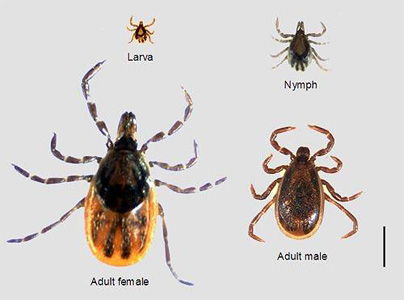Silent, Tick-Borne Disease on the Rise

Cases of babesiosis, a malarialike illness transmitted by deer ticks that can be fatal, are on the rise in parts of New York State, a new study says.
Over the last decade, babesiosis diagnoses increased twentyfold in the Lower Hudson Valley region, growing from six cases in 2001 to 119 in 2008. In other parts of the state, diagnoses increased just 1.6- fold over the same period, the researchers said.
The reason for the rise in this area is still a mystery, said study researcher Dr. Gary Wormser, chief of the division of infectious diseases at New York Medical College. In fact, the tick-carrying rodents such as mice and shrews that spread the disease don't like to travel long distances, so it's unlikely that they brought it in from other areas.
The disease can be life-threatening, particularly for those with weakened immune systems, severe liver or kidney disease, or those without a spleen, according to the Centers for Disease Control and Prevention (CDC). About one in 20 people who have a severe form of the disease die from it, Wormser said.
However, most people are fine and have no symptoms at all, according to the CDC. Because of this, there is concern about the disease silently spreading through transfusions from infected donors, Wormser said.
Babesiosis infection
Babesiosis is caused by the parasite Babesia microti, which infects red blood cells. = Symptoms can include fever, nausea and headache, the CDC says. The disease can also cause anemia through loss of red blood cells. It is most common in the northeastern United States, and the upper Midwest.
Sign up for the Live Science daily newsletter now
Get the world’s most fascinating discoveries delivered straight to your inbox.
The new study reported 19 hospitalizations from babesiosis at the Westchester Medical Center between 2002 and 2009. One person died from the condition, Wormser said.
The disease is still less of a public health concern than Lyme disease, another tick-borne illness, Wormser said. But, although Lyme disease can cause complications including paralysis, doctors usually aren't worried about that Lyme disease will be fatal, Wormser said. That's not the case for babesiosis, in which some patients can become "dramatically ill," Wormser said.
Children seem to be able to handle the disease much better than adults, Wormser said. Detectable babesiosis in children is rare, he said.
Prevention
The best way to prevent babesiosis infection is to avoid tick-infested habitats, such as wooded or grassy areas, the CDC says. If you do venture into these areas, walk in the center of the cleared trails. Reduce skin exposure by wearing long sleeves, pants and socks, and tucking the pants into the socks.
You can also apply insect repellants that contain DEET to your skin or clothing, the CDC says.
After your outdoor adventure, take a shower and check your body for ticks. Check thoroughly because the ticks that spread babesiosis, called I. scapularis, are very small, about the size of a poppy seed, the CDC says. A tick must usually stay attached for 24 to 36 hours to transmit the parasite, but if you find one, remove it as soon as possible.
This story was provided by MyHealthNewsDaily, a sister site to LiveScience. Follow MyHealthNewsDaily staff writer Rachael Rettner on Twitter @RachaelRettner.

Rachael is a Live Science contributor, and was a former channel editor and senior writer for Live Science between 2010 and 2022. She has a master's degree in journalism from New York University's Science, Health and Environmental Reporting Program. She also holds a B.S. in molecular biology and an M.S. in biology from the University of California, San Diego. Her work has appeared in Scienceline, The Washington Post and Scientific American.
Flu: Facts about seasonal influenza and bird flu
What is hantavirus? The rare but deadly respiratory illness spread by rodents









